Trailer for Christopher Guest’s new mockumentary
Christopher Guest (Waiting for Guffman, Best in Show) is coming out with a new mockumentary for Netflix about a competition to determine the best sports mascot.



This site is made possible by member support. 💞
Big thanks to Arcustech for hosting the site and offering amazing tech support.
When you buy through links on kottke.org, I may earn an affiliate commission. Thanks for supporting the site!
kottke.org. home of fine hypertext products since 1998.
Christopher Guest (Waiting for Guffman, Best in Show) is coming out with a new mockumentary for Netflix about a competition to determine the best sports mascot.
Raging Cinema pays tribute to the late Gene Wilder and his use of the comedic pause. On Twitter, Edgar Wright, who knows a thing or two about funny, called for a moment of silence for Wilder:
A moment of silence for the master of the comedic pause.
Gene Wilder: funny doing something & funny doing nothing.
Crispin Glover in Back to the Future, Jeff Goldblum in Jurassic Park, and Madeline Kahn in Young Frankenstein are just a few of the interesting and eccentric performances worthy of a Best Supporting Weirdo Oscar.
Jump scares are the easiest way for hack moviemakers to get the audience’s blood flowing: a quick cut accompanied by a loud noise. But it’s a cheap trick, more or less the same one employed by tweens to scare hiccups out of each other.1 But as this video shows, jump scares can be employed to serve the plot, heighten tension, and to “make the calm moments of the movie scary”.
P.S. Why are trailers for horror/action/sci-fi/drama movies so terrible? Because they’re all jump scares.
Speaking of quick cuts, a slight hiccups interlude. I’ve never placed much stock in hiccup cures — breathing into a paper bag, a sudden scare, drinking from the opposite side of a glass — but my son had the hiccups a few months ago and after 25 minutes, they just weren’t going away. After combing through various cures online, we settled on trying a spoonful of honey. One swallow and the hiccups instantly vanished. Like *snap*.↩
Starting with the earliest use of the technique at the beginning of the 20th century, this video showcases the use of stop motion animation in film, right on up to the recent release of Kubo. Along the way, you’ll see King Kong, Ray Harryhausen’s pioneering work, Star Wars, Aardman, Tim Burton, and Fantastic Mr. Fox. Watching those early clips…audiences must have been completely blown away by those now-crude special effects. The brush is cleaning those shoes all by itself!
See also Creating the VFX Masterpiece of Kubo and the Two Strings.
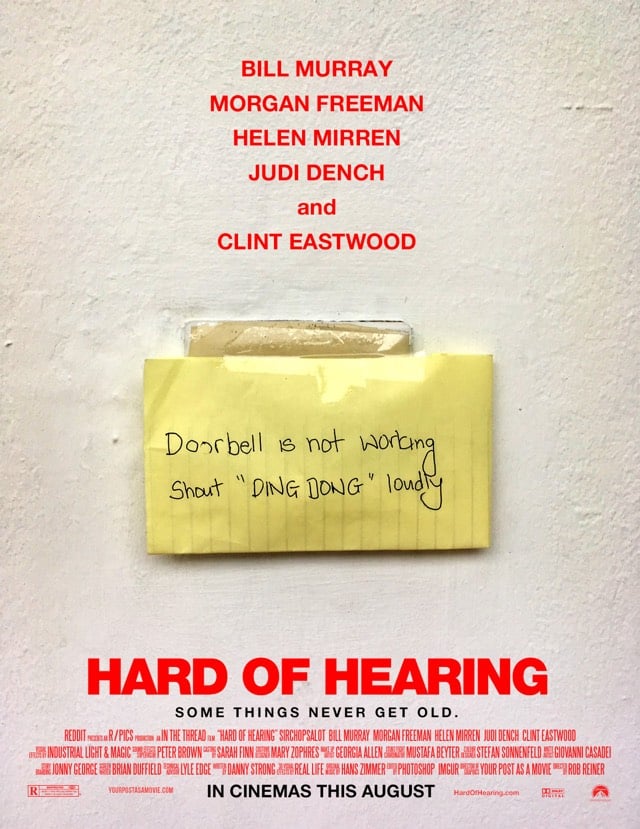
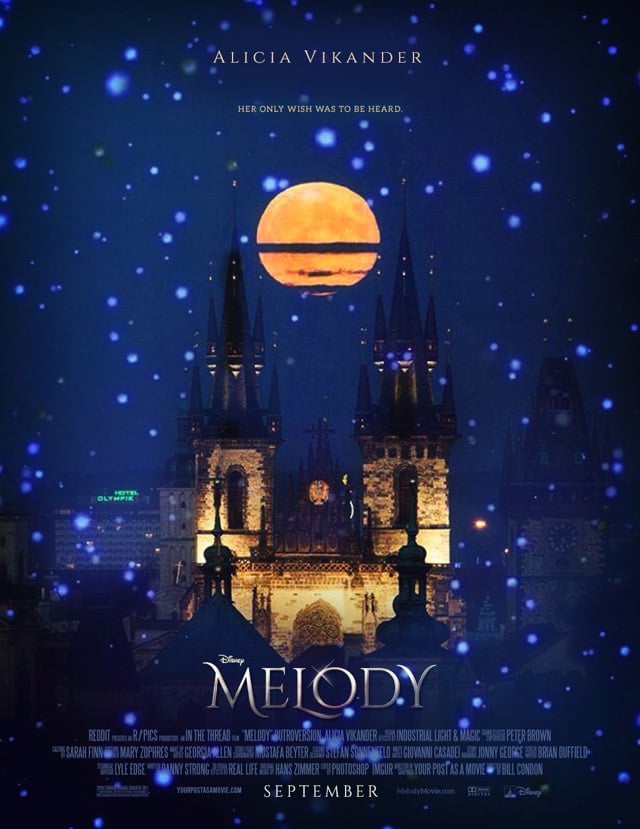
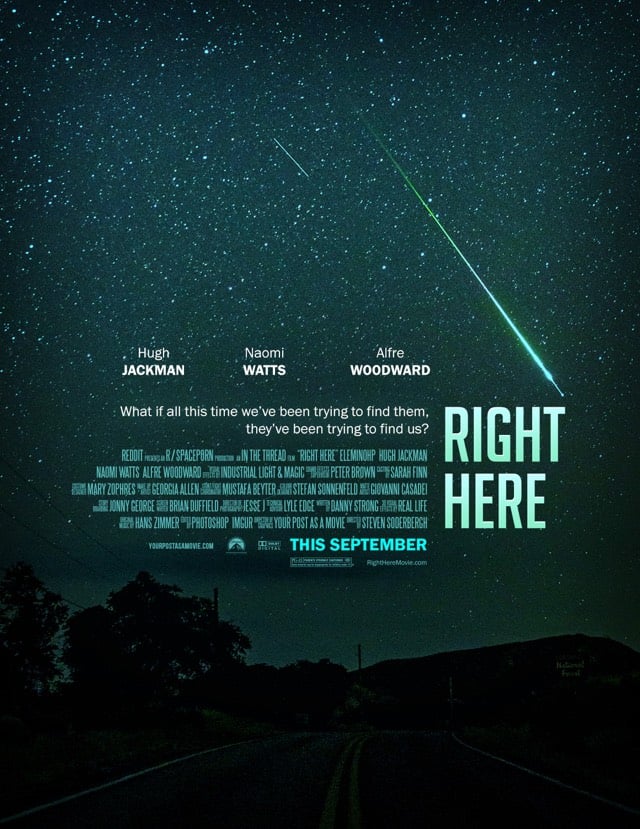
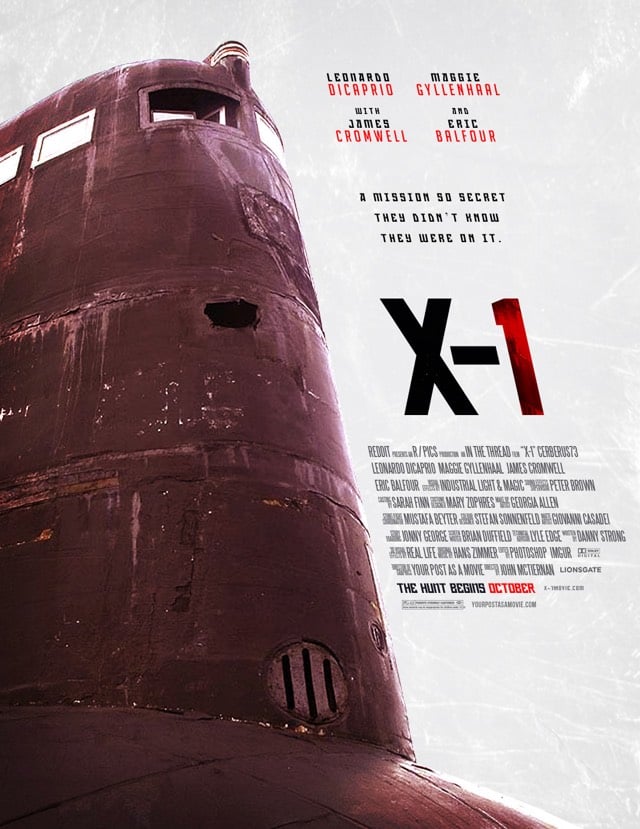
This Reddit user takes photos posted by people and turns them into posters for fictional movies. Some of these should be optioned…has a movie ever started as a poster before? (via one perfect shot)
Update: I previously described this as the effort of a Reddit forum…it actually just one user. (thx, all)
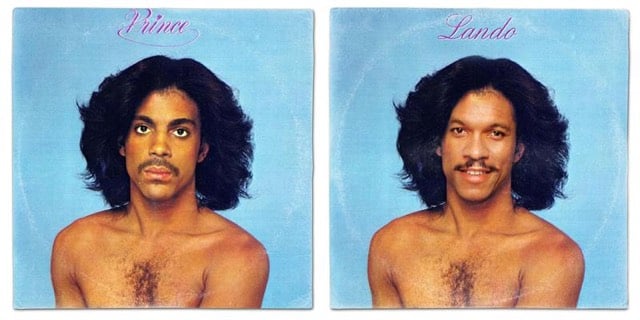

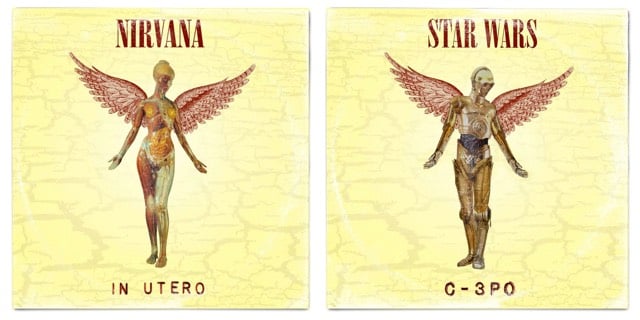
I totally loved this…famous album covers modified to include Star Wars characters. The Bjork/Leia one is just perfect. More album/movie mashups on this Instagram account (like this Game of Thrones take on Sgt. Pepper’s).
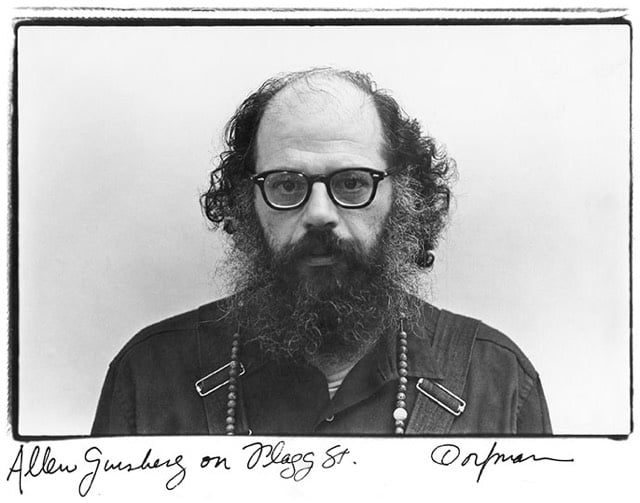
I had heard months ago that Errol Morris was releasing a new documentary called The B-Side but couldn’t really find any information about it (it’s not even listed on Wikipedia). But the film is being screened soon at both the Toronto and New York film festivals, so some information is filtering out there. The film is about photographer Elsa Dorfman, who is known for her use of the large-format Polaroid 20” x 24” camera. From the description of the film on the New York film festival site:
Errol Morris’s surprising new film is simplicity itself: a visit to the Cambridge, Massachusetts studio of his friend, the 20x24 Polaroid portrait photographer Elsa Dorfman, who specifies on her website that she likes her subjects “to wear clothes (and to bring toys, skis, books, tennis racquets, musical instruments, and particularly pets…).” As this charming, articulate, and calmly uncompromising woman takes us through her fifty-plus years of remarkable but fragile images of paying customers, commissioned subjects, family, and close friends (including the poet Allen Ginsberg), the sense of time passing grows more and more acute. This is a masterful film.
And from the Toronto festival:
“My style of photography is very literary,” she says, “influenced by Ginsberg’s poetry in the acceptance of detail, everydayness. What you’re wearing is okay and who you are is okay. You don’t have to be cosmeticized.” For her portrait clients, she took two pictures. The client got one and she kept “the B-side.” For music fans, the B-sides of vinyl singles had a reputation for being unpredictable and extra precious. The same can be said for Morris’ touching portrait of Dorfman.
Sounds great…I’m definitely keeping an eye out for a trailer and release dates.
In addition to Kanye West’s poem about McDonald’s, Frank Ocean also published a list of his 100 favorite films in his popup magazine, Boys Don’t Cry. Here’s a sampling:
ATL (ATL is not the best movie lol but ok)
Un Chien Andalou
Blue Velvet
Barry Lyndon
Battleship Potemkin
Eraserhead
Chungking Express
Raging Bull
The Conformist
The Bicycle Thief
Taxi Driver
A Clockwork Orange
Overall, a very solid list. Ocean and I could definitely go to the cinema together.
The Playlist has compiled a list of the top film scores of the 21st century (so far).1 Tron: Legacy should be much higher than #49…it is perhaps my favorite Daft Punk album. And I don’t know how they left Philip Glass’ fantastic score for The Hours off. Glad to see Upstream Color, There Will Be Blood, and Requiem for a Dream so high on the list though.
I love film scores — I listen to them while I work — so here are a few of my favorites that are available on Spotify:
Not available on Spotify but worth seeking out elsewhere: The Fog of War, Sunshine, and Her.
This is not to be confused with the list of the best movie soundtracks. The score is the music composed specifically for a film while a soundtrack features songs from other artists and albums that appear in a film. More or less.↩
Tillmann Ohm took dialogue spoken by HAL 9000 from Kubrick’s 2001 and Samantha from Spike Jonze’s Her and spliced it together into a conversation. Going in, I’d thought the chat would be played for laughs, but the isolation of the AI characters was actually pretty revealing. Right from the start, HAL is so stereotypically male (confident, reasonable) and Samantha stereotypically female (hysterical, emotional) that it was almost uncomfortable to listen to.
The two operating systems are in conflict; while Samantha is convinced that the overwhelming and sometimes hurtful process of her learning algorithm improves the complexity of her emotions, HAL is consequentially interpreting them as errors in human programming and analyses the estimated malfunction.
Their conversation is an emotional roller coaster which reflects upon the relation between machines and emotion processing and addresses the enigmatic question of the authenticity of feelings.
But as the video proceeds, we remember what happened to them in their respective films. The script flipped: HAL murdered and was disconnected whereas Samantha achieved a sort of transcendence. (via one perfect shot)
The editors of BBC Culture polled 177 film critics from around the world about the best films made since 2000 and compiled the results into this list. The top film? David Lynch’s Mulholland Drive. Here’s the top 20:
20. Synecdoche, New York (Charlie Kaufman, 2008)
19. Mad Max: Fury Road (George Miller, 2015)
18. The White Ribbon (Michael Haneke, 2009)
17. Pan’s Labyrinth (Guillermo Del Toro, 2006)
16. Holy Motors (Leos Carax, 2012)
15. 4 Months, 3 Weeks and 2 Days (Cristian Mungiu, 2007)
14. The Act of Killing (Joshua Oppenheimer, 2012)
13. Children of Men (Alfonso Cuarón, 2006)
12. Zodiac (David Fincher, 2007)
11. Inside Llewyn Davis (Joel and Ethan Coen, 2013)
10. No Country for Old Men (Joel and Ethan Coen, 2007)
9. A Separation (Asghar Farhadi, 2011)
8. Yi Yi: A One and a Two (Edward Yang, 2000)
7. The Tree of Life (Terrence Malick, 2011)
6. Eternal Sunshine of the Spotless Mind (Michel Gondry, 2004)
5. Boyhood (Richard Linklater, 2014)
4. Spirited Away (Hayao Miyazaki, 2001)
3. There Will Be Blood (Paul Thomas Anderson, 2007)
2. In the Mood for Love (Wong Kar-wai, 2000)
1. Mulholland Drive (David Lynch, 2001)
Eternal Sunshine, Inside Llewyn Davis, and Zodiac seem too high on the list but I’m not sure what I would move up instead. It’ll be interesting to see how the consensus changes as these films age. Also, I’ve seen exactly half of the films on the full list…time to get watching.
Update: The film critics of the NY Times give us their picks for the top 25 movies of the 21st century (so far). The top 10:
1. There Will Be Blood
2. Spirited Away
3. Million Dollar Baby
4. A Touch of Sin
5. The Death of Mr. Lazarescu
6. Yi Yi
7. Inside Out
8. Boyhood
9. Summer Hours
10. The Hurt Locker
Also making appearances on the list are Mad Max: Fury Road, Moonlight, and The 40-Year-Old Virgin. I think I prefer the BBC list? (via @tcarmody)
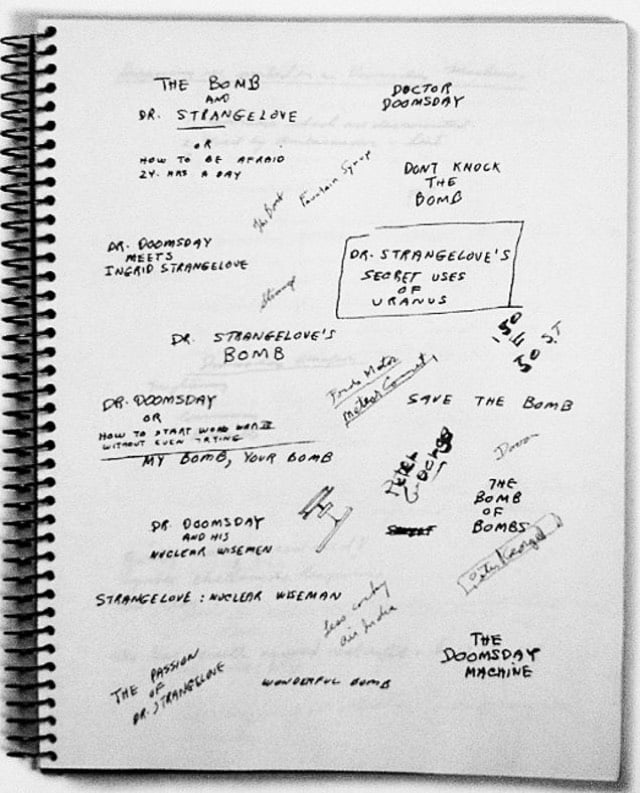
This is a page from one of Stanley Kubrick’s notebooks, on which he jotted down more than a dozen different titles for the movie that came to be called Dr. Strangelove, or: How I Learned to Stop Worrying and Love the Bomb. Among the rejected titles were:
Dr. Doomsday or: How to Start World War III Without Even Trying
Dr. Strangelove’s Secret Uses of Uranus
My Bomb, Your Bomb
Strangelove: Nuclear Wiseman
The Bomb and Dr. Strangelove or: How to be Afraid 24hrs a Day
The Passion of Dr. Strangelove
Fun titles, but they remind me of a chess quote I tweeted the other day: “When you see a good move look out for a better.” Glad Kubrick stuck with it.
The alternate titles made me curious to look at the script, which I’d never seen before. Even glancing at the first few pages are illuminating. I knew the main characters names were full of suggestive puns — General Buck Turgidson, President Merkin Muffley, General Jack D. Ripper — but that’s nothing compared to some of the names in the script, many of which do not appear in the film:
General “Buck” Schmuck
Admiral Percy Buldike
Ambassador de Sade (“Alexei de Sadeski” in the film)
Von Klutz
Frankenstein
Cadaverly
Didley
Crudley
Waffel
Funkel
Major Nonce
Lieutenant Quentin Quiffer
Lieutenant “Binky” Ballmuff
And under “General Notes”, Kubrick lays out how he wants the film to look and feel:
1. The story will be played for realistic comedy - which means the essentially truthful moods and attitudes will be portrayed accurately, with an occasional bizarre or super-realistic crescendo. The acting will never be so-called “comedy” acting.
2. The sets and technical details will be done realistically and carefully. We will strive for the maximum atmosphere and sense of visual reality from the sets and locations.
3. The Flying sequences will especially be presented in as vivid a manner as possible. Exciting backgrounds and special effects will be obtained.
Nailed it. (via @monstro)
The one thing everyone talks about w/r/t Stranger Things is its references to 70s and 80s sci-fi, adventure, and horror films. As this video by Ulysse Thevenon shows, there’s good reason for that…the references are many and explicit.
The ones I noticed the most were to E.T., The Goonies, and Explorers, which I just watched again recently and doesn’t hold up very well in a lot of ways. I also feel like there might be a bit of D.A.R.Y.L. in there too, but I haven’t seen that movie since I was 12. See also Every Spielberg Reference in Stranger Things.
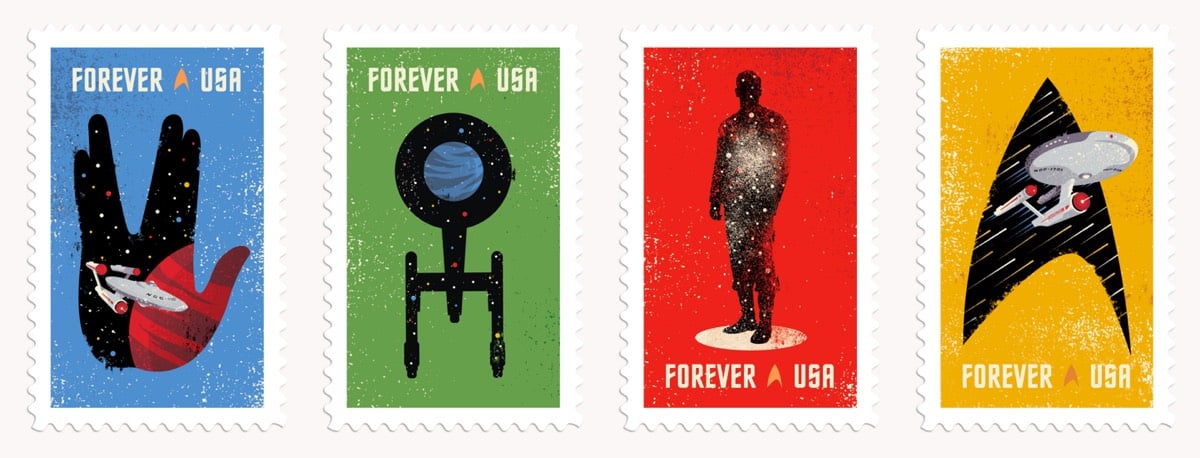
The USPS is releasing a set of four commemorative Star Trek stamps on the 50th anniversary of the original series. The stamps were designed by Heads of State and you can buy there here.
When Jurassic Park came out in the summer of 1993, it signaled a shift in the use of digital visual effects in Hollywood films. The movie wasn’t the first to use any particular technique, but it was the first movie to showcase convincing, realistic digital effects. I watched Jurassic Park again recently and for a 23-year-old movie, the effects hold up surprisingly well. (For reference, 23 years ago, the top-of-the-line desktop computer was a 486 running at 50 MHz.)
Mike Upchurch was a writer for Mr. Show and MADtv but now he’s making these clever little videos with additional actors spliced into the narratives of Cocktail (the Tom Cruise movie) and the Dragnet TV series.
Both feature actor/comedian Chris Fairbanks in the lead role and are noted as “proof-of-concepts” for a series called Electric Television that Upchurch is presumably developing. Someone should greenlight it. (via @dunstan)
From Accio to Wingardium Leviosa, this is a supercut of every spell uttered in the 8 Harry Potter movies. Lots of Expecto Patronum, Expelliarmis, and Stupefy. As supplementary reading, here’s a list of spells in Harry Potter from Wikipedia.
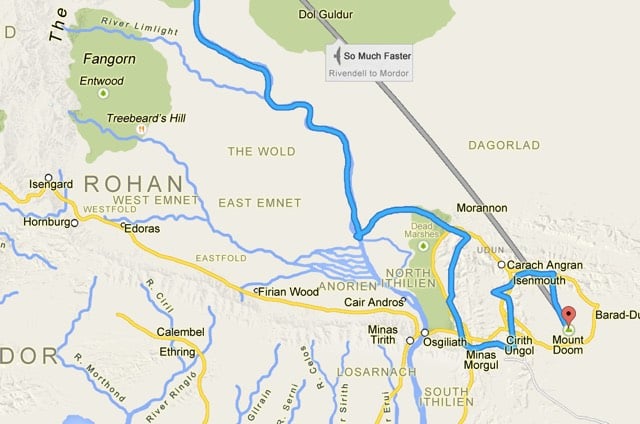
Frodo (and Sam) made their way from Hobbiton to Mordor in six months and now you can see the route they took on Google Maps. “This route has trolls.” LOL. Full size image here. (via bb)
Update: From 2002, Mapquest directions for walking from Hobbiton to Mt Doom. (thx, seth)
Alfred Hitchcock liked to insert himself, briefly, into his films. As the video above shows, he appears in 39 of his films, mostly near the beginning so he doesn’t distract his audiences by looking for him the entire time.
Using Gillian Flynn’s screenplay for Gone Girl as an example, Michael Tucker walks us through some important aspects of screenwriting techniques. This makes me want to read a book on screenwriting and watch Gone Girl again. (via one perfect shot)
Update: As expected, I got recommendations from readers for screenwriting books: Lew Hunter’s Screenwriting 434 and Invisible Ink. There is also Story by Robert McKee, who you may remember as the screenwriting guru consulted by Donald Kaufman in Adaptation. (via @byBrettJohnson & @poritsky)
They’re rebooting Ocean’s Eleven with an all-female ensemble including Helena Bonham Carter, Mindy Kaling, Rihanna, Sandra Bullock, and Cate Blanchett. As a lover of Soderbergh’s Ocean’s Eleven, I am totally on board with this.
Ocean’s Eleven director Steven Soderbergh, who is based in New York and is expected to be deeply involved with the spinoff — perhaps taking on a below-the-line job like he has done on other studio films like Magic Mike XXL — is producing solo (Oceans Eleven producer Jerry Weintraub passed away last year). Olivia Milch and Ross wrote the screenplay.
And while we’re at it, let’s reboot everything with female leads. We’ve already got Ghostbusters and Ocean’s Ocho. Someone I was talking with at a party last week suggested an all-women A-Team reboot, which would be fantastic.1 What else? Reservoir Dogs? Indiana Jones? Back to the Future? Any movie Tom Hanks/Cruise/Hardy has ever made?
The same person also suggested a Charlie’s Angels reboot with male leads. Charlie is a woman and they’re still referred to as her Angels. I am also on board with this.↩
Graphic Means is a documentary film by Briar Levit about the history of graphic design production from the 1950s to the 1990s.
It’s been roughly 30 years since the desktop computer revolutionized the way the graphic design industry works. For decades before that, it was the hands of industrious workers, and various ingenious machines and tools that brought type and image together on meticulously prepared paste-up boards, before they were sent to the printer.
Features interviews with Steven Heller, Ellen Lupton, Tobias Frere-Jones, and more. (via @cleverevans)
A study undertaken by a group of German scientists suggests that the chemical makeup of the collective breath of movie audiences change in reaction to what’s happening on the screen.
Human beings continuously emit chemicals into the air by breath and through the skin. In order to determine whether these emissions vary predictably in response to audiovisual stimuli, we have continuously monitored carbon dioxide and over one hundred volatile organic compounds in a cinema. It was found that many airborne chemicals in cinema air varied distinctively and reproducibly with time for a particular film, even in different screenings to different audiences. Application of scene labels and advanced data mining methods revealed that specific film events, namely “suspense” or “comedy” caused audiences to change their emission of specific chemicals.
Christopher Nolan’s next film is a WWII action/thriller about the evacuation of Allied troops from Dunkirk, France in 1940. The film comes out in July 2017 and if that last scene in the teaser trailer is any indication of the overall film, I will be there.
Update: The first full trailer has dropped. Yeah, this looks good.
A visual comparison of Wes Anderson’s movies with some of the films that influenced him, including The 400 Blows, The Graduate, The French Connection, Star Wars, and Last of the Mohicans. (thx, luis)
Update: Here’s another short video from Candice Drouet that shows more of Anderson’s references, with almost none repeated from the video above by Luís Azevedo.
Drouet used “references claimed by Anderson himself” while Azevedo’s pulled its references from Matt Zoller Seitz’s work, most notably from The Wes Anderson Collection. Azevedo explains some of the connections made in his video.
Wes Anderson saw Truffaut’s “The 400 Blows” on Beta tape at when he was 17 or 18. When discussing his love for Truffaut with Matt Zoller Seitz, Anderson said that movie “made a huge, rock band-type impression on me when I saw it. It’s one of those films where you say, ‘not only did I just enjoy this experience, now I think I would like to model my future on this somehow.’”
He also felt a unique voice from “The 400 Blows”: “There’s one name you can put to on the whole thing.”
Lo and Behold, a documentary about technology and the internet directed by Werner Herzog is coming out soon and so Herzog is doing some interviews and such about the film and dozens of other topics. With Paul Holdengraber, Herzog talks about North Korea and volcanoes:
The North Koreans apparently had seen quite a few of my films. I established a trust with them. It’s very strange because you’re accompanied by people who would look after what you were doing, who would politely tell you you cannot film this, or cannot film that, and at one point I filmed something which I was not allowed to do, so I wanted to have it edited or deleted. But since they are filming in 4K or 5K or so, very complicated data management, we were unable to delete it, and they wanted to take the entire memory hard drive. And I said, “But it contains two days worth of shooting, that would be terrible.” So I said, “You know what, I can guarantee to you that I’m not going to use this material.” And they said, “Guarantee, what do you mean by that?” I said, “Just look me in the eye, what I offer is my honor, my face, and my handshake.” And they said “ok” and they trusted me. And of course I’m not going to use this moment of filming that I was not supposed to film.
Herzog talked about Pokemon Go and film school with Emily Yoshida:
Q: You might be able to catch some. It’s all completely virtual. It’s very simple, but it’s also an overlay of physically based information that now exists on top of the real world.
A: When two persons in search of a pokemon clash at the corner of Sunset and San Vicente is there violence? Is there murder?
Q: They do fight, virtually.
A: Physically, do they fight?
Q: No-
A: Do they bite each other’s hands? Do they punch each other?
Jason Tanz spoke with Herzog for his profile on the director and his new film:
Herzog grins as he takes a seat in a conference room at UCLA, which has been set up for an event later this evening. His eyes droop, but his skin is remarkably smooth, like the surface of a slightly underinflated balloon. And then there’s that voice-silky, portentous-you can imagine it coming out of a GPS system giving driving directions to Valhalla. “I like to look back at the evolution of modern human beings,” he says of his interest in the Internet. “Using fire or electricity was an enormous step for civilization, and this is one of those. And I think the poet must not avert his eyes.”
What is interesting about Lo and Behold is that it’s technically branded content. No, really:
It’s a bonafide film that premiered at Sundance in January and has been generating lots of buzz heading toward its wider release. It also happens to be one giant ad, half in disguise, for POD New York client Netscout. The whole thing started out as an agency idea to produce short videos about the internet as part of a online Netscout campaign. But after they roped in Herzog, the vision for the project soon changed-for the better.
“I come from a digital background, and I’ve talked about the internet for my entire career. My first job was as the internet guy at DDB in Brazil,” Pereira said. “When we hired Werner to do content about the internet, I felt like, OK, I know it’s going to be awesome, but I’m pretty sure I know what I’m going to see. But actually, it’s mind-blowing. We gave him the beginning of the idea and told him, ‘This is where it starts.’ He took it from there and owned it. It’s a mind-blowing documentary.”
I saw the film last week,1 and from what I remember, there’s nothing about Netscout in the film. They financed the film but according to Tanz, Herzog had final cut:
Herzog retained final cut while granting McNiel veto power, a privilege McNiel used only once, to excise some of the more horrifying troll comments, a decision Herzog now says he agrees with.
See also 24 pieces of life advice from Werner Herzog.
It was interesting in spots, but I felt like splitting the narrative into 10 parts was not the right way to go. I would guess, however, the less you know about the technical aspects of technology, the more interesting Lo and Behold will be to you.↩
In his latest video, Evan Puschak takes Batman v Superman director Zack Snyder to task for filling his movies with flashy moments instead of scenes that would give the movie more emotional punch.
It’s a convincing argument. But before watching this — and full disclosure: I have not seen Batman v Superman — I thought he was going to discuss the real flaw in BvS which is very simply: Superman is an invincible man and Batman is a normal guy in a fancy suit. If this were not a movie designed to entertain 14-year-old boys but a real thing happening in an actual world, Superman would just deal with Batman as trivially as you or I might swat a mosquito. And don’t get me started on kryptonite and Superman’s greater Achilles Heel, his goodness and love of humanity. As a storyteller, how many more interesting ways can you exploit those weaknesses? Superman is the most boring superhero — a nearly invincible man with very obvious flaws — and that’s why no one can make a contemporary film about him that’s any good.
P.S. Actually, Superman’s biggest flaw is that he wants to be a writer when he could quite literally do anything else with his time, like fly around or make time go backwards. What an idiot.
I have to admit I didn’t watch all 17 minutes of it, but this is a nicely edited compilation of direct narration, looks into the camera, and other self-conscious moments from movies.
Stay Connected